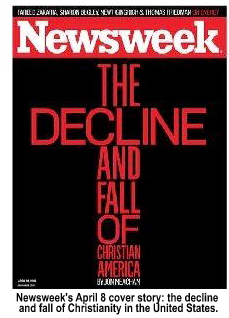
News
Behind the Headlines
Two-Cents Worth
Video of the Week
News Blurbs
Articles
Testimony
Bible Questions
Internet Articles (2015)
Internet Articles (2014)
Internet
Articles (2013)
Internet Articles (2012)
Internet Articles (2011)
Internet Articles (2010)
Internet Articles
(2009)
Internet Articles (2008)
Internet Articles (2007)
Internet Articles (2006)
Internet Articles (2005)
Internet Articles (2004)
Internet Articles (2003)
Internet Articles (2002)
Internet Articles (2001)


![]() very
year about this time—Passover (or, the Christianized version of the
event, which we call Easter)—one
of several
"biggie" questions invariably pops up. It never fails. There
are any number of these types of pivotal questions, but there is one that
atheists best like to throw at Christians. They like it because they think
it conclusively proves that the Christian Bible is replete with such profound
inconsistencies that, to anyone with a half-a-brain, it renders the Holy
Writ as nothing but ancient idiolectual dry rot.
very
year about this time—Passover (or, the Christianized version of the
event, which we call Easter)—one
of several
"biggie" questions invariably pops up. It never fails. There
are any number of these types of pivotal questions, but there is one that
atheists best like to throw at Christians. They like it because they think
it conclusively proves that the Christian Bible is replete with such profound
inconsistencies that, to anyone with a half-a-brain, it renders the Holy
Writ as nothing but ancient idiolectual dry rot.
Sadly, far too many Christians study the word of God with the same prowness-of-mind that they study politics. Today, we have an interloper in the White House whose right to occupy 1600 Pennsylvania Avenue is still unresolved in the minds of those voters who understand the reason for the constitutional prohibition against anyone not a natural US citizen from being eligible to seek, or hold, the office of President of the United States. Since the left knows the voters of the United States use only half-a-brain when they vote, why would they use more than half-a-brain when they study the Word of God? And, because the voters are so easily duped in the voting booth, why should they be any harder to dupe in the far more complicated matters of theology and salvation?
A major global political debate is now raging over the personage and deity of Jesus Christ because the Son of God no longer fits the plans of man. In the view of the Utopians who now increasingly champion Islam as the primary religion of the world (thinking they can harness the Muslim mind), Christians are increasingly viewed as bigots and racists who would deny Heaven to those who are not Christian, and who condemn those who choose not to bear the children they conceive; or those who choose, like the residents of Sodom and Gomorrah and the other three cities of the Plains, to cohabit with others of their own sex.
The New Worlders who are determined to create a one world economic, political and religious system controlled by the Utopians of the New World Order understand that before the remnants of Christianity can be merged into the boiling pot of Hinduism, Islam, Buddhism, and New Age Gaia-ism, the spirit of Christianity must be broken. The shattered remnants of "the church" must then be reshaped into a more palatable, nonjudgmental religion that accepts Islam, Hinduism, Taoism, Shintoism, as Sikhism as equals where men find a universal deity, neither hot nor cold, in the cauldron of humanity that condemns no man and accept the precepts of man over the laws of God. The universal god of Man, like the golden idols of ancient Egypt, are nothing more than golden calves. A God who is not omniscient cannot grant dying men eternal life nor endow living men with inalienable rights.
That's why man has spent
countless trillions of taxpayer dollars to "tame" space since
the Soviets launched the world's first artificial satellite, Sputnik I
on Oct. 4, 1957. Since the early 20th century, Science has tried hard
to prove that man is the accidental creation of nature and not the deliberate
creation of a Supreme Being.  If
God is not sovereign, then men have no right to expect inalienable rights
that cannot be retracted by government.
If
God is not sovereign, then men have no right to expect inalienable rights
that cannot be retracted by government.
Over the past decade the liberal media has driven the point home that Christianity as the dominant religion of America is declining. Newsweek predicted the fate of Christianity as fact on the cover of their April 8, 2009 issue. In that issue was an article by Newsweek writer Jon Meacham in which he characterized it as the importance of Christianity in decline. Meacham's view is that Christianity offers spirituality without binding authority, presumably because society no longer needs God. Meacham argues in the article that Americans who identify themselves as Christians is declining at the rate of about 5% per decade. Meacham's views are not based on scientific polling but the declining effectiveness of the political power of the Christian right to affect its agenda and to protect Christian rights in America.
As recent as 20 years ago, several national polls determined that 79% of those polled held a traditional belief in God. Of the total polled, 54% identified themselves as "born again." Thirty-seven percent of those polled had a problem with one or more of the tenets of Christianity, such as whether or not Jesus was actually the son of God; or if He was actually conceived by the Holy Spirit; or if He was born of a Virgin, or if He physically rose from the dead after being crucified. (Some skeptics have even suggested that while He was crucified, loyalists removed Him from the cross before He died. Others have suggested His body was stolen by His disciples and secretly buried in the desert.)
If Jesus Christ did not physically rise from the grave, then our faith is in vain because it would be impossible for us to rise from the grave if Jesus Christ did not do it first. That's the reason skeptics spend more time attacking Christ's crucifixion, burial and resurrection than any other facet of His ministry on Earth. And, anyone who merely reads the Bible casually, might conclude that God's Word provides the skeptic with enough ammunition to even raise doubt in the minds of believers. In Matthew 12:40, when the Pharisees asked for a sign that he was the Son of God, Christ said: "For as Jonah was three days and three nights in the [belly of a whale], so shall the Son of Man be three days and three nights in the heart of the Earth." Paul, the Apostle, seems to contradict Christ in 1 Corinthians 15:3-4 when he said: "For I delivered unto you first of all that which I also received, how that Christ died for our sins according to the Scriptures; And that He was buried, and that he rose again on the third day according to the Scriptures." (Note: in the King James Version, the interpretation from Greek to English, the whale is referred to by Jesus as a large fish. Jonah 1:17 uses the same terminology, but the "fish" was a whale.
For those who doubt that a large whale could swallow a man whole and spit him back out alive a day and a half later, it reportedly happened in the South Atlantic in February, 1891. Without mention of the name of the hapless Jonah who experienced the trauma, the event was noted in a news blurb—as fact—over a 100 year period, ending in 1991 by the Associated Press. The AP was reporting on an article that appeared in the American Scientific. The story has been poophahed by TruthorFiction.com. The 1991 AP report appeared in the Charleston, WV Gazette & Daily Mail. I clipped the news blurb from that paper and stuck it in one of my Bibles.
The story centered around a British whaler named James Bartley who was sailing on the whaling ship Star of the East off the coast of the Falkland Islands. The whalers launched the harpoon boats when whales were sighted. Bartley was in one of the harpoon boats in February, 1891. A whale struck Bartley's harpoon boat, capsizing it. One man drown and Bartley simply disappeared. He was given up by the crew as dead as well. After a monumental struggle, the whalers prevailed and the carcass of the dead whale was brought on board the whaling ship where the whale fat would be harvested. Between 16 to 30 hours elapsed before the crew got to the stomach cavity of the behemoth sea mammal. When they slit it open, they found James Bartley, curled up in a fetal position, unconscious, but still alive. His hair and skin were bleached. And his clothes had already rotted off his body.
In the aftermath of the American Scientific story, Dr. Edward B. Davis, Professor of Behavior Science at Messiah College in Grantham, PA decided to prove or debunk the story. After scourging through old newspapers, he found the story, first, in the New York World dated April 12, 1896, and then in the London Times for Sunday, Nov. 22, 1896. In scanning other issues of the Times from around that period, Davis found several other references to the Bartley story. (In reporting this story as false, TruthorFiction chose to omit this information. It's like a prosecutor declining to share exculpatory information with the defense that exonerates the defendant or at least, mitigates the case against him.)
 On
Aug. 25, 1891, the Yarmouth Mercury reported that in Gorleston,
England a whale ran into a pier and beached itself. Davis concluded
that single event triggered a host of fish stories of which the Bartley
story being swallowed was just one. Nevertheless,
Davis said he diligently checked with London hospitals—a century
after the Bartley event happened—for evidence that the Bartley
story was true, but none of the hospitals had a record of treating anyone
named Bartley for burns due to gastric juices. When ships dock
at port cities, logic suggests if you have a seriously injured crew member
on board, you don't ferry them to London, you have them treated where
the whaling ships dock—most likely Southhampton, Dover, Plymouth
or Liverpool. London's not exactly a port city. It's unlikely that Bartley
would have been transported from his ship's berth to London for treatment
in 1891. Today that would likely be the case since one would assume the
medical facilities in London would be more advanced.
On
Aug. 25, 1891, the Yarmouth Mercury reported that in Gorleston,
England a whale ran into a pier and beached itself. Davis concluded
that single event triggered a host of fish stories of which the Bartley
story being swallowed was just one. Nevertheless,
Davis said he diligently checked with London hospitals—a century
after the Bartley event happened—for evidence that the Bartley
story was true, but none of the hospitals had a record of treating anyone
named Bartley for burns due to gastric juices. When ships dock
at port cities, logic suggests if you have a seriously injured crew member
on board, you don't ferry them to London, you have them treated where
the whaling ships dock—most likely Southhampton, Dover, Plymouth
or Liverpool. London's not exactly a port city. It's unlikely that Bartley
would have been transported from his ship's berth to London for treatment
in 1891. Today that would likely be the case since one would assume the
medical facilities in London would be more advanced.
Davis ultimately concluded the story was a hoax because in 1907 a reader of the Expository Times of London wrote a letter-to-the-editor claiming that when he contacted the widow of Capt. John B. Killiam, the skipper of the Star of the East, for information about Bartley, she denied the event happened. Killam's widow, then an elderly woman who may have just wanted to be left alone, had apparently defended the integrity of the account for 16 years before finally denying it. Is this just one more "exposed" fish tale that discredits a Biblical event that many Christians had a hard time swallowing when they read it in Sunday school for the first time years ago? If the Bartley story is true as claimed by the London Times and the New York World, and much, much later, American Scientific magazine and the Associated Press that relayed the story, then clearly a whale can swallow a man and regurgitate him, alive, on the third day.
In my 1996 book, The Baffled Christian's Handbook published by R. James Bender Publishing and vetted by theologians from three major universities, I raised that question on page 113: "If Christ was in the grave for three days and nights, how could He rise from the grave on the third day?"
I answered it thus: Did Jesus physically rise from the grave on the third day, or was His resurrection merely an allegorical symbol of an endtime resurrection? While His resurrection is well-documented in each of the Gospels (Mt. 28:1-5; Mk. 16:1-14; Lk. 21:1-32; Jn. 20:1-9) many liberal mainline denominations appear to be having a problem accepting the resurrection as a literal, historical event. Is it, do you suppose, because liberal archeologists have not physically confirmed it through fossil records which could not possibly exist since Christ physically ascended to Heaven from Mt. Olivet [Ac. 1:9-12] forty days after His resurrection?
Shortly before his own crucifixion at the hands of Nero, Peter, who was a witness to both Christ's crucifixion and His resurrection, said: "For we did not follow cleverly devised fables when we made known to you the power and coming of our Lord Jesus Christ, but we were witnesses to His majesty." (2 Pe. 1:16 NASB).
In 1 Corinthians 15:12-23 Paul stressed that the physical resurrection of Jesus was essential to our salvation. If Christ was not raised from the dead, we are still in sin, and our faith is in vain...Before Christ rose from the grave on the third day (1 Cor. 15:4) there wasn't enough power in the Upper Room to light a 40-watt light bulb let alone light up the world. If Christ had not risen from the grave, if He had not visited the disciples who huddled in fear in that room, Christianity would have died with His physical death. The disciples would have scattered throughout Judea, returning to their former occupations, and Jesus would have been nothing more than a memory.
More than a few converts to Christianity have a problem accepting the concept of a physical resurrection. Some wrongly choose to believe that the resurrection is meant to be interpreted allegorically. The problem, fanned by skeptics who believe they have found an inconsistency in the Word of God that somehow negates the resurrection, is centered on what they think are flaws in the burial timeline: if Jesus was in the grave (mnemeion) for three days and three nights (Mt. 12:40), how could He possibly rise on the third day (1 Cor. 15:4)?
To fully appreciate the importance of this dilemma, we must recognize as fact that if Jesus was in the grave for three literal 24-hour days and nights, we are faced with a fourth day resurrection, which contradicts the Bible. If Matthew 12:40, which clearly says: "...For as Jonah was three days and three nights in the belly of a huge fish, the son of Man will be three days and three nights in the heart of the earth..." (NIV) is correct, then the tax collector's writings contradict 1 Cor. 15:3-4 "...that Christ died for our sins according to the Scriptures, that He was buried, that He was raised on the third day according to the Scriptures..."
Somehow it does not seem possible that both statements could be true and accurate--yet they are! Christ was in the grave for three days and three nights--but not literal 24-hour days—and He rose on the third day. In both Hebrew and Greek societies of that day, when a person referred to a period of time, say, three days and three nights, only a portion of the first and third might be involved. Those contemporary to the Apostles would have understood the reference, and would not have seen an inconsistency with the two statements.
An example that supports this conjecture is found in 1 Sam. 30:12. David, in the heat of battle, complained that he had not eaten in three days and nights. The Hebrew text renders his statement (as well as in verse 13 in the same chapter) as hayyom u'e losah, which literally means "the day before yesterday." The same applies to the text about Jonah 1:17: "And the Lord appointed a great fish to swallow Jonah, and Jonah was in the stomach of the fish three days and three nights." [NASB] Again, hayyom u'e losah is used. Jonah was in the belly of the whale for one complete 24 hour period and parts of two other days. This interpretation substantiates both Matthew 12:40 and 1 Cor. 15:3-4.
History confirms that Jesus gave up the ghost around 3 p.m. on Friday, April 11, 32 A.D. Before the sun set that evening, He was placed in a borrow sepulcher [Mt. 27:60]. The period of time between 3 pm. and sunset constituted the first day and the first night. From sunset on Friday evening until sunset on Saturday evening constitutes the second, 24-hr. day. Jesus rose on Sunday, April, 13, 32 AD. The night from sundown on Saturday constituted the third night and the break of day on Sunday as the third day. Understanding the Semite view of day and night, we can now see how Jesus was in the grave for three days and three nights and rose on the third day. And...remember, whenever the Bible says something that appears to be a contradiction, it isn't. You just haven't figured out why it appears to be one.

Copyright © 2009 Jon Christian Ryter.
All rights reserved.


